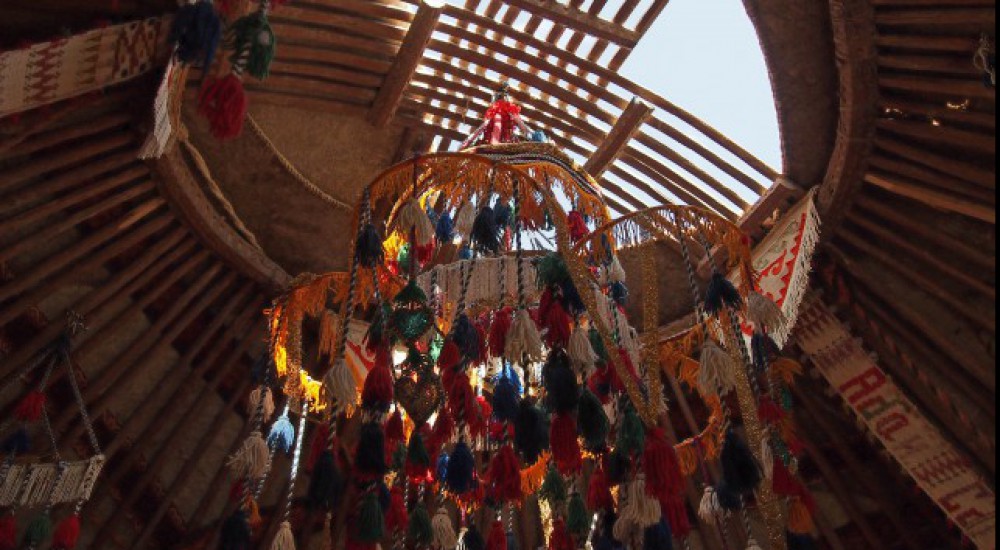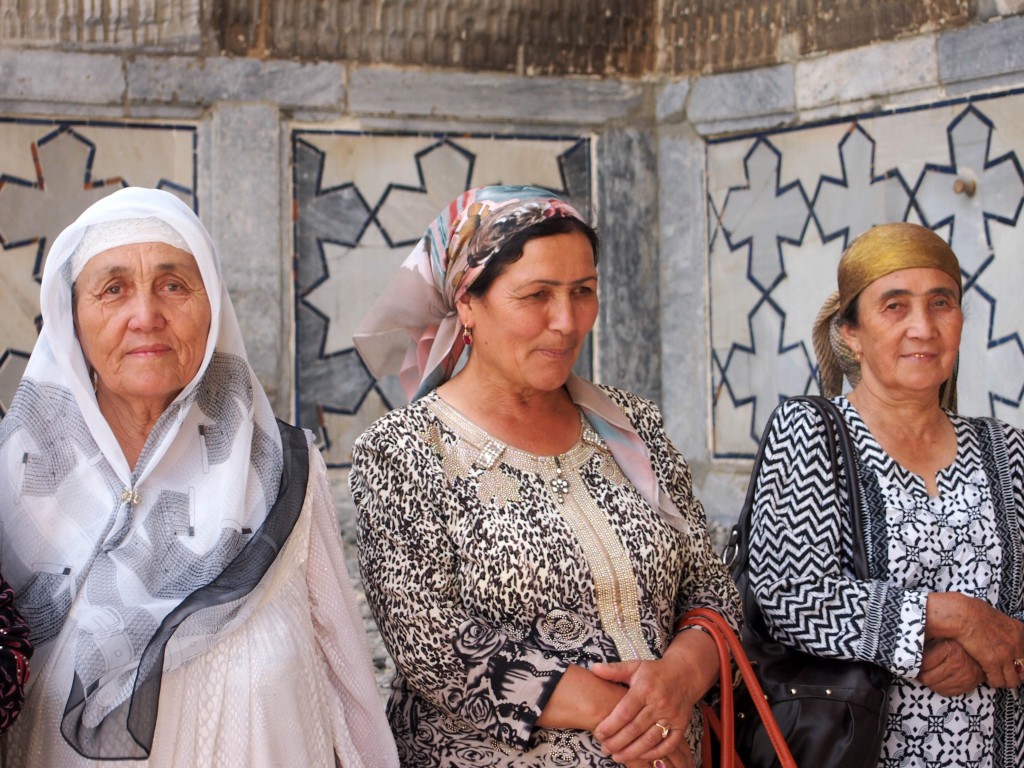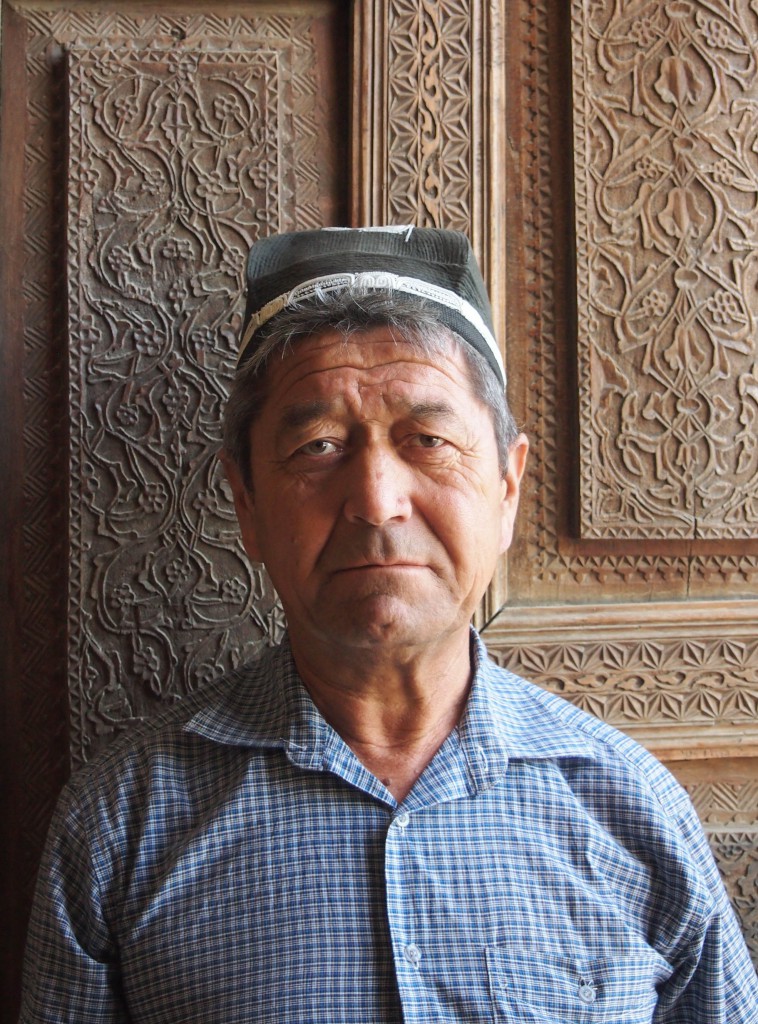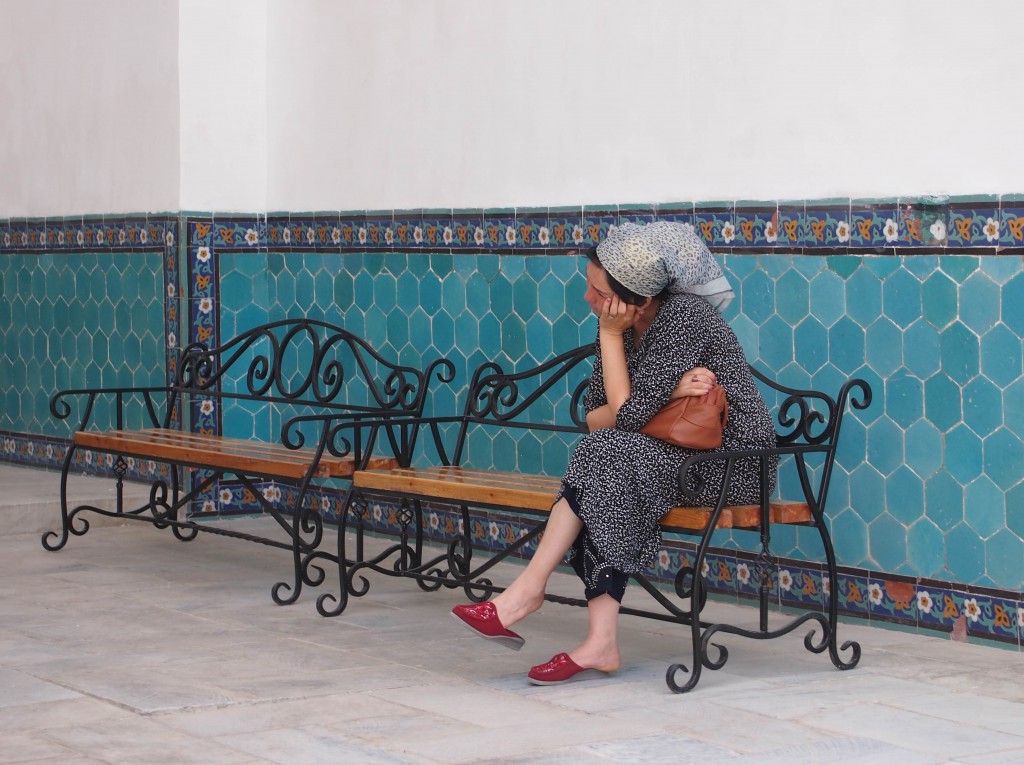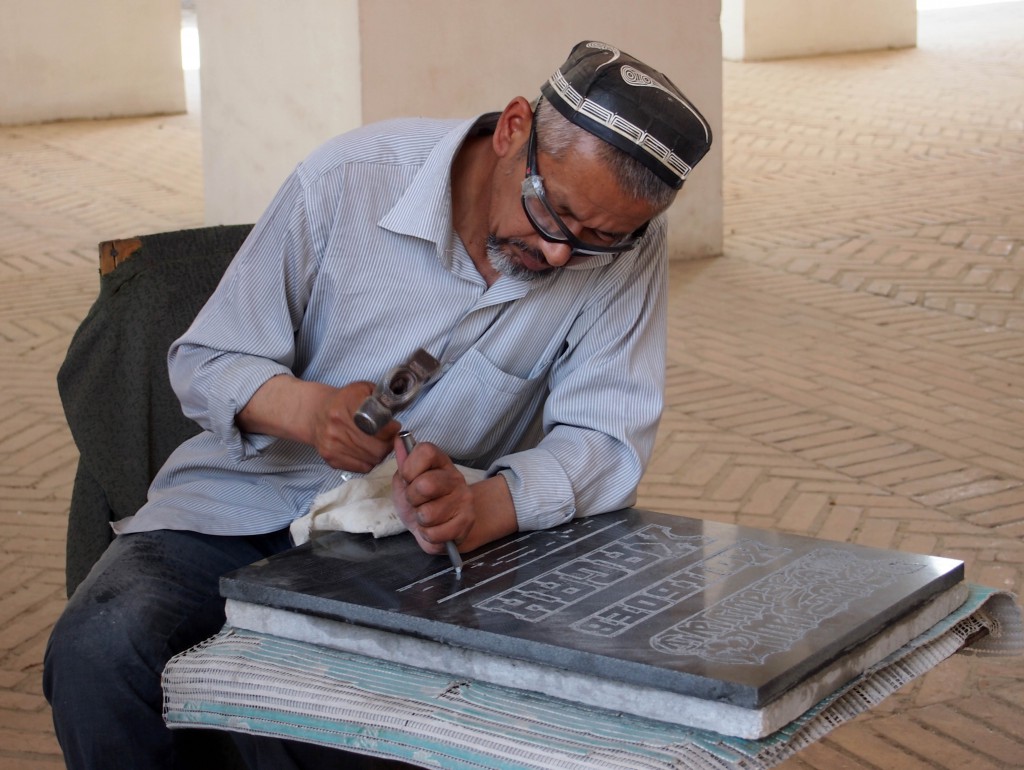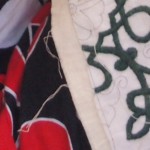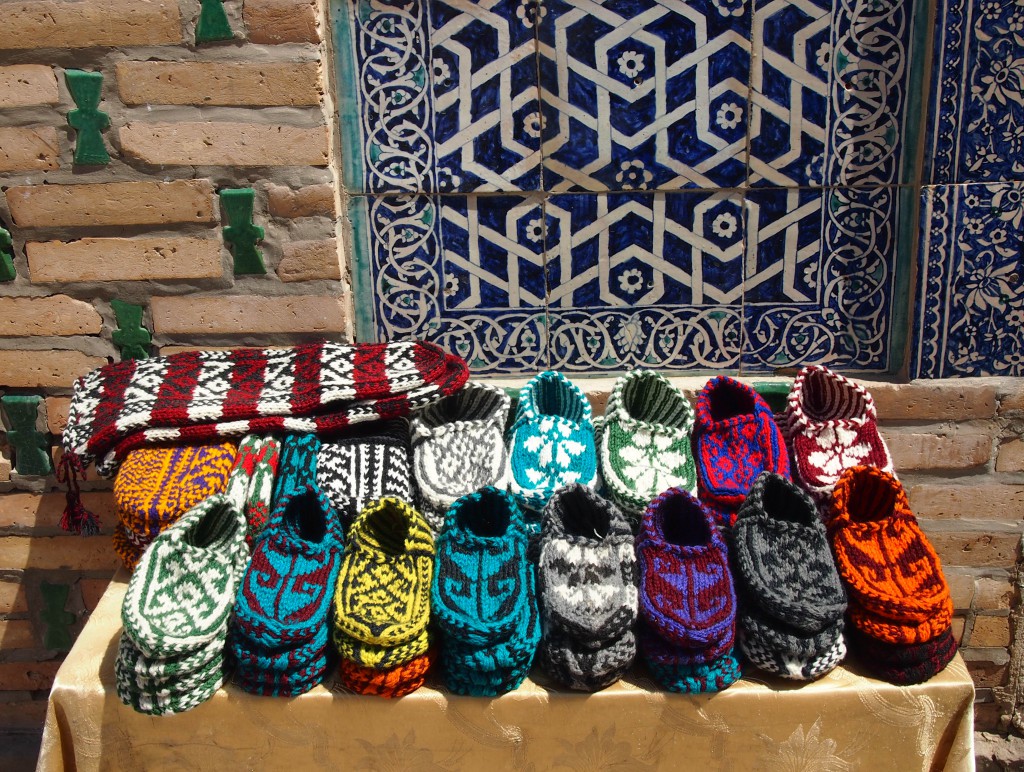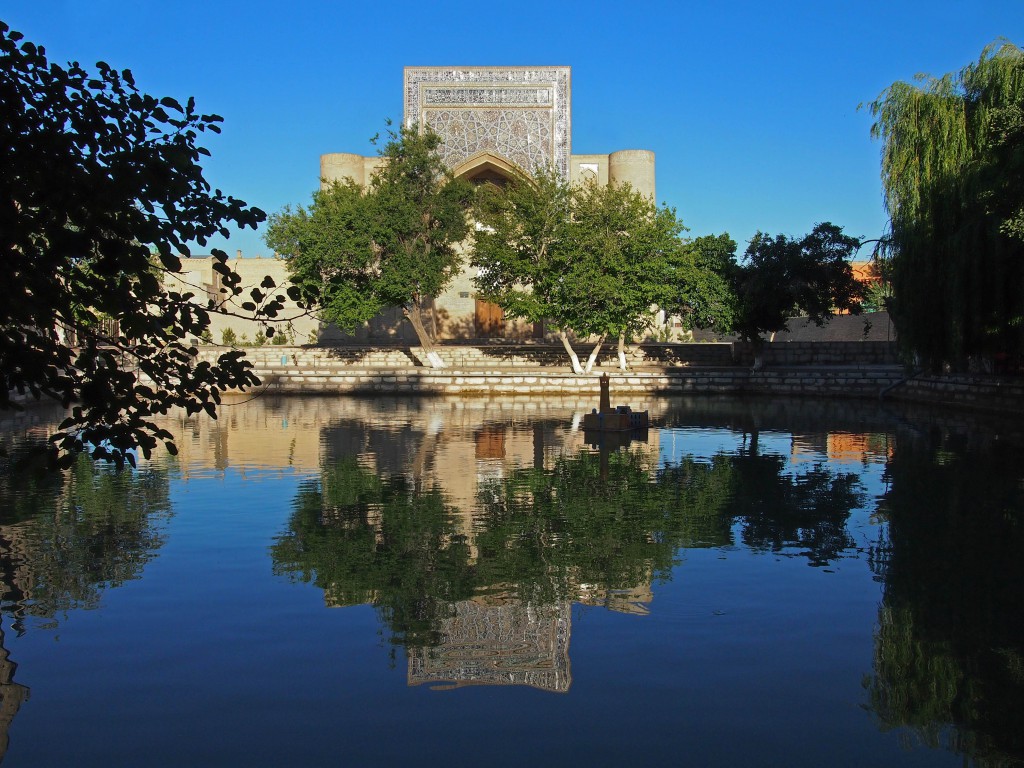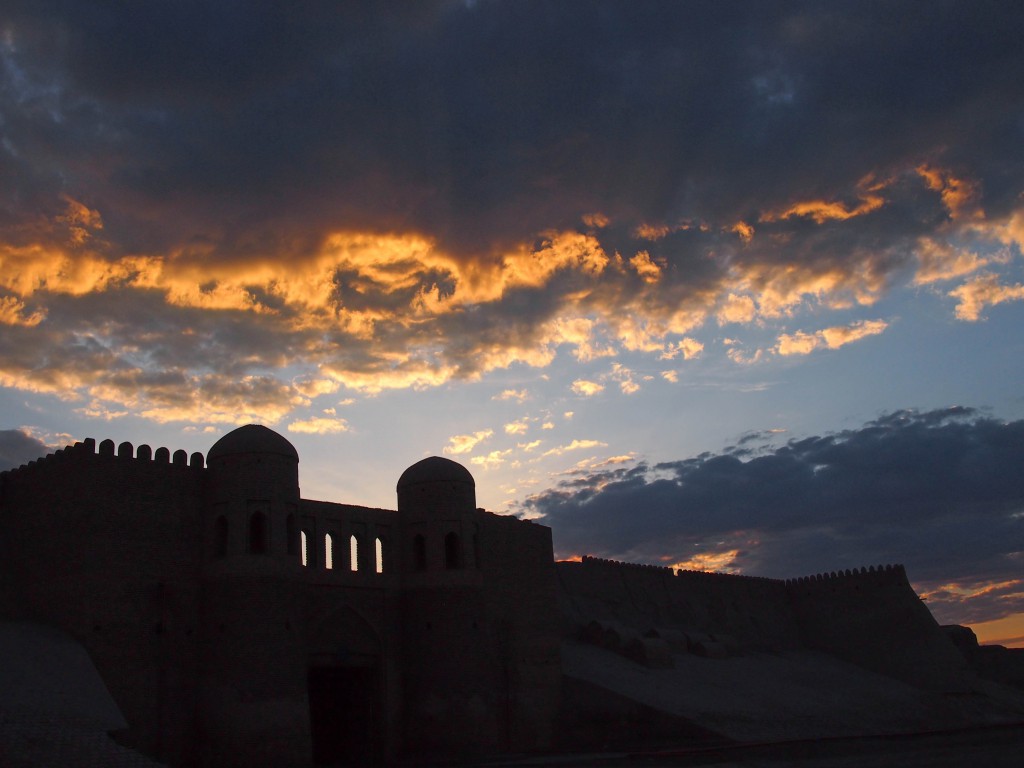 Near the Registan, the 14th-century Bibi Khanum Mosque was meant to be the crowning architectural achievement of Tamerlane’s reign. Its serenely elegant marble dadoes seem in perfect harmony with the dress and demeanor of these three Uzbek women seated by the entrance.
Near the Registan, the 14th-century Bibi Khanum Mosque was meant to be the crowning architectural achievement of Tamerlane’s reign. Its serenely elegant marble dadoes seem in perfect harmony with the dress and demeanor of these three Uzbek women seated by the entrance.
Monthly Archives: October 2014
Door
 The guardian of the 14th-century Rukhobod Mausoleum, built in Samarkand for a mystic Tamerlane admired, stands before its intricately carved doors, survivals of the era’s artistry in wood. His lined, sun-browned face, stalwart expression, and grid-patterned shirt seem imbued with the qualities of the Timurid treasure he protects.
The guardian of the 14th-century Rukhobod Mausoleum, built in Samarkand for a mystic Tamerlane admired, stands before its intricately carved doors, survivals of the era’s artistry in wood. His lined, sun-browned face, stalwart expression, and grid-patterned shirt seem imbued with the qualities of the Timurid treasure he protects.
Thought
Hands
 As a popular Central Asian saying puts it, if the husband is the head of the household, the wife is the neck, turning him as she wishes. One sees this in the quiet, collective strength of these Uzbek women visiting the Ark, the fortified citadel of old Bukhara. Their hands, photographed in a rare moment of repose, bespeak decades of capable management and hard work.
As a popular Central Asian saying puts it, if the husband is the head of the household, the wife is the neck, turning him as she wishes. One sees this in the quiet, collective strength of these Uzbek women visiting the Ark, the fortified citadel of old Bukhara. Their hands, photographed in a rare moment of repose, bespeak decades of capable management and hard work.
Gravestone
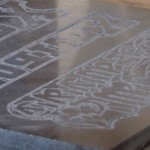 Numerous madrassahs have been transformed into studios for craft production. Here in Shakhrisabze, birthplace of Tamerlane, a sculptor chisels a gravestone in the former lecture hall, concentrating on the written word, just as past students did. At the top is an Arabic funerary inscription, while below is the deceased’s name in Cyrillic, vestige of the Soviet period in Central Asia.
Numerous madrassahs have been transformed into studios for craft production. Here in Shakhrisabze, birthplace of Tamerlane, a sculptor chisels a gravestone in the former lecture hall, concentrating on the written word, just as past students did. At the top is an Arabic funerary inscription, while below is the deceased’s name in Cyrillic, vestige of the Soviet period in Central Asia.
Girl
Slippers
Pool
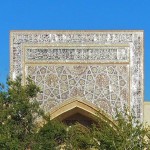 The limpid waters of a stone-lined pool in Bukhara mirror an exquisitely tiled, 17th-century hospice, the mulberry trees planted when it was built, and the lustrous blue of the steppe sky – in short, the quintessential emblems of this caravan city’s cosmopolitanism, silk wealth, and celebrated community of astronomers and other scholars.
The limpid waters of a stone-lined pool in Bukhara mirror an exquisitely tiled, 17th-century hospice, the mulberry trees planted when it was built, and the lustrous blue of the steppe sky – in short, the quintessential emblems of this caravan city’s cosmopolitanism, silk wealth, and celebrated community of astronomers and other scholars.
Khiva Dawn
The traveler setting forth from Khiva at dawn turns to look back at its gateway and battlements. In that silhouette is the timeless Silk Road experience: within, the oasis cities whose history spans thousands of years; without, the sweep of steppe, desert, and mountains stretching from China to the Caspian, and far beyond in image and imagination. ♦
